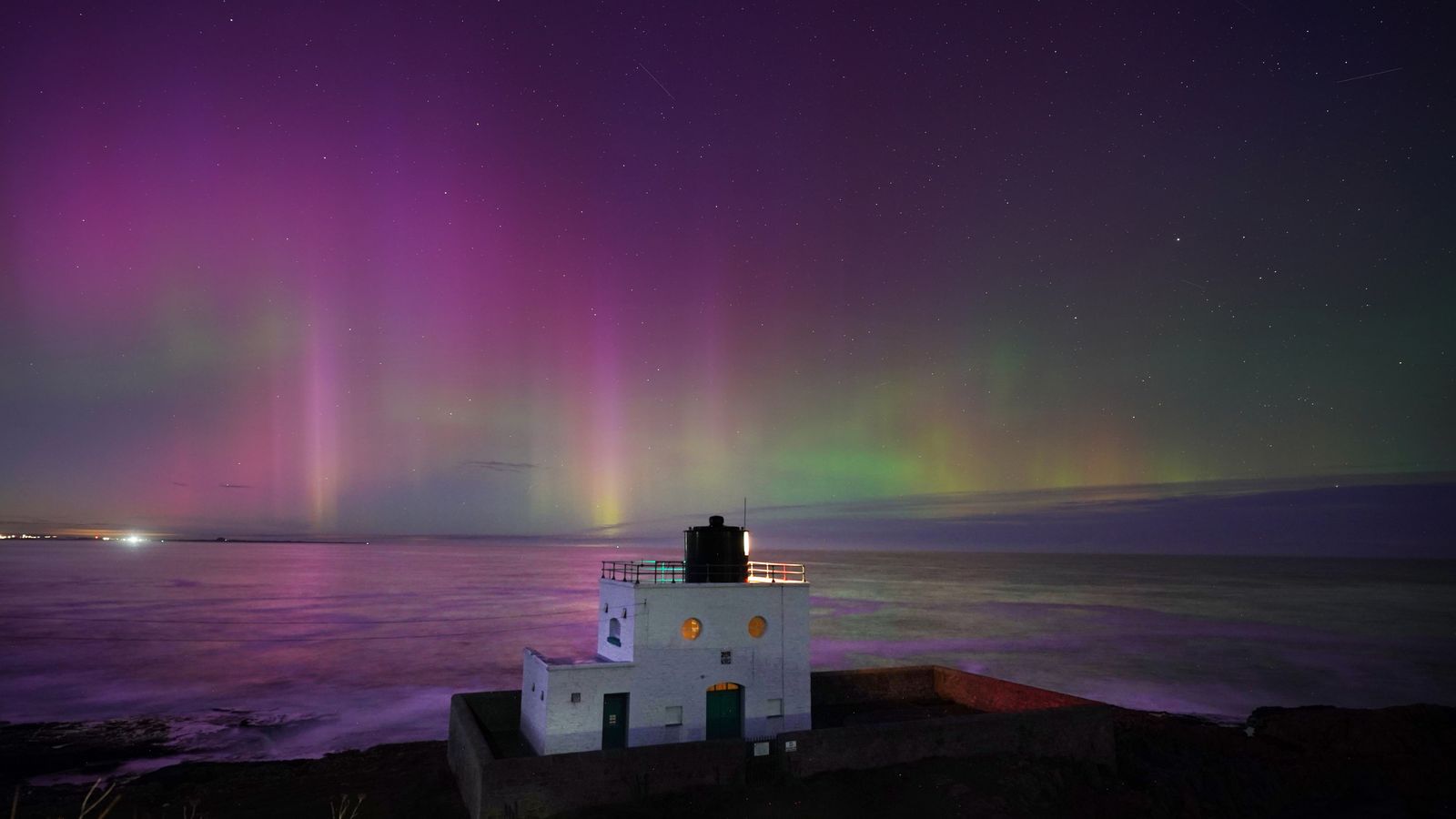The Northern Lights flooded skies across the UK with colour during bonfire night weekend.
The Met Office confirmed the phenomenon had been “observed across Scotland” and was “clearly visible from Shetland webcams”.
Sightings were also “reported across some central and eastern parts of England” on Sunday night, the weather agency said.
Scotland was identified as the best place to have spotted the spectacle, which is also known as aurora borealis. The Met Office said it had been possible to see it in Wales as well.
An array of pink and yellow hues were even reportedly seen as far south as Stonehenge in Wiltshire.
Bamburgh Lighthouse in Northumberland was among the other landmarks to be bathed in green and red tones.
The phenomenon can be notoriously hard to spot with the naked eye – even in countries such as Norway and Iceland where sightings are more common.
Be the first to get Breaking News
Install the Sky News app for free
Read more from Sky News:
How a ‘filament eruption’ sparked Northern Lights
‘Creepy’ bright flashes seen near homes in Wales
‘Hero’ astronaut who helped save Apollo 13 crew dies
Professor Don Pollacco, from the University of Warwick’s physics department, said its shapes can change very quickly over a matter of just a few minutes or seconds.
He said the lights were caused by “the interaction of particles coming from the sun, the solar wind, with the Earth’s atmosphere – channelled to the polar regions by the Earth’s magnetic field.”
“Once the particles are channelled into the Earth’s atmosphere they interact with molecules and have distinctive colours, [for example] oxygen molecules produce green light, nitrogen red light, etc, and patterns such as light emissions that look like curtains or spotlights,” Prof Pollacco added.
Many social media users uploaded snaps of their sightings, including of tones of purple in the skies above Northamptonshire.
The village of Lonmay in Aberdeenshire was another hotspot where the phenomenon was seen.





